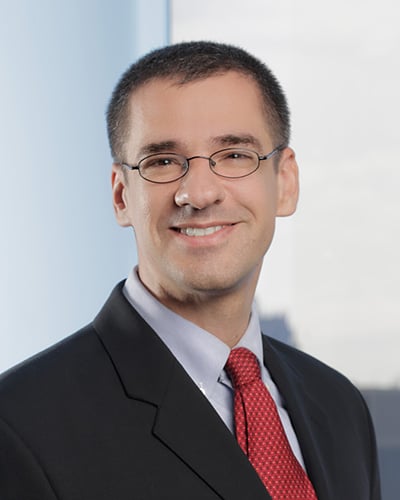On May 18, 2023, the Supreme Court issued its opinion in Amgen Inc. v. Sanofi, No. 21-757, affirming unanimously the Federal Circuit’s decision invalidating two of Amgen’s patents functionally claiming a genus of monoclonal antibodies that help reduce levels of low-density lipoprotein cholesterol (LDL, or “bad” cholesterol). The Court agreed with the Federal Circuit that the patent claims were invalid for lack of enablement.
As the Supreme Court explained, Amgen’s patents together claimed a monopoly over all antibodies that (1) bind to specific amino acids on a protein known as PCSK9 and that (2) block PCSK9 from impairing the body’s mechanism for removing LDL from the bloodstream. After Amgen sued Sanofi for infringement, Sanofi argued that the patents were invalid under Section 112 of the Patent Act for failing to describe the invention “in such full, clear, concise, and exact terms as to enable any person skilled in the art . . . to make and use the [invention].” 35 U.S.C. Section 112(a). Sanofi contended that the patents fail to meet this burden because they claim a monopoly over potentially millions of antibodies, while the specification describes the amino acid sequences of only 26 of the antibodies that meet the claimed binding and blocking functions. In response, Amgen argued that the specification includes two methods instructing scientists how to make additional antibodies with the claimed binding and blocking functions. The first method directs scientists to generate a range of antibodies in the lab and then test them for the binding and blocking functions, respectively. The second method requires a scientist to start with an antibody known to practice both functions and then to replace select amino acids and test the resulting antibodies to see if they perform the described functions. Sanofi, in turn, characterized those methods as amounting to little more than a trial-and-error process that is inadequate to meet the enablement requirement.
The district court and the Federal Circuit agreed with Sanofi, concluding as a matter of law that the claims are not enabled. The Federal Circuit determined that “no reasonable factfinder could conclude” that Amgen had provided adequate guidance to make and use the claimed antibodies “beyond the narrow scope of the [26] working examples” identified in the specification Amgen Inc. v. Sanofi, Aventisub LLC, 987 F.3d 1080, 1088 (Fed. Cir. 2021). Amgen appealed, arguing that the Federal Circuit’s decision raised the bar for enablement of “genus” claims (claiming an entire class of inventions) and that it is not supported by the statutory text of Section 112 of the Patent Act. The Supreme Court granted certiorari and unanimously affirmed the Federal Circuit’s decision. Justice Neil Gorsuch delivered the opinion of the Court.
Relying heavily on decisions going back over 150 years—including the famous O’Reilly v. Morse decision involving Samuel Morse’s telegraph and the Incandescent Lamp Patent decision involving Thomas Edison’s light bulb—the Supreme Court held that “the specification must enable the full scope of the invention as defined by its claims.” Slip op. at 13. As the Supreme Court explained, “[i]f a patent claims an entire class of processes, machines, manufactures, or compositions of matter, the patent’s specification must enable a person skilled in the art to make and use the entire class.” Id. In other words, “the more a party claims, the broader the monopoly it demands, the more it must enable.” Slip op. at 16. “That holds true whether the case involves telegraphs devised in the 19th century, glues invented in the 20th, or antibody treatments developed in the 21st.” Id.
The Supreme Court, however, also recognized that Section 112 does not require that a patent specification describe how to make and use every single embodiment within a claimed class. Rather, “it may suffice to give an example (or a few examples) if the specification also discloses ‘some general quality . . . running through’ the class that gives it ‘a peculiar fitness for the particular purpose.’” Slip op. at 13. Likewise, the Supreme Court held that “a specification may call for a reasonable amount of experimentation to make and use a patented invention,” but “[w]hat is reasonable . . . will depend on the nature of the invention and the underlying art.” Slip op. at 15. Cautioning against a broad application of such a standard, however, the Supreme Court added that “courts cannot detract from the basic statutory requirement that a patent’s specification describe the invention ‘in such full, clear, concise, and exact terms as to enable any person skilled in the art’ to ‘make and use’ the invention.” Id.
With respect to the specific claims at issue in Amgen’s two patents, the Supreme Court “agree[d] with the lower courts that Amgen has failed to enable all that it has claimed, even allowing for a reasonable degree of experimentation.” Slip op. at 15. As the Supreme Court noted, Amgen “freely admits that it seeks to claim for itself an entire universe of antibodies” but nonetheless argues that the claims are enabled “because scientists can make and use every undisclosed but functional antibody if they simply follow the company’s ‘roadmap’ or its proposal for ‘conservative substitution.’” Slip op. at 16. The Supreme Court rejected this argument, finding that “[t]hese two approaches amount to little more than two research assignments” because they call on scientists to create and test a wide range of antibodies, which is “an uncertain prospect given the state of the art.” Slip op. at 16–17. In the Court’s view, “Amgen offers persons skilled in the art little more than advice to engage in ‘trial and error.’” Slip op. at 18. According to the Court, forcing a scientist “to engage in ‘painstaking experimentation’ to see what works . . . is not enablement. More nearly, it is ‘a hunting license.’” Id.
Following the Supreme Court’s significant decision here—affirming the strength of the enablement defense—we expect to see more enablement challenges as parties debate both what is covered within “the full scope of the invention” and how much is a “reasonable degree of experimentation” for any given technology.
Authors
Stay Up To Date with Ropes & Gray
Ropes & Gray attorneys provide timely analysis on legal developments, court decisions and changes in legislation and regulations.
Stay in the loop with all things Ropes & Gray, and find out more about our people, culture, initiatives and everything that’s happening.
We regularly notify our clients and contacts of significant legal developments, news, webinars and teleconferences that affect their industries.


